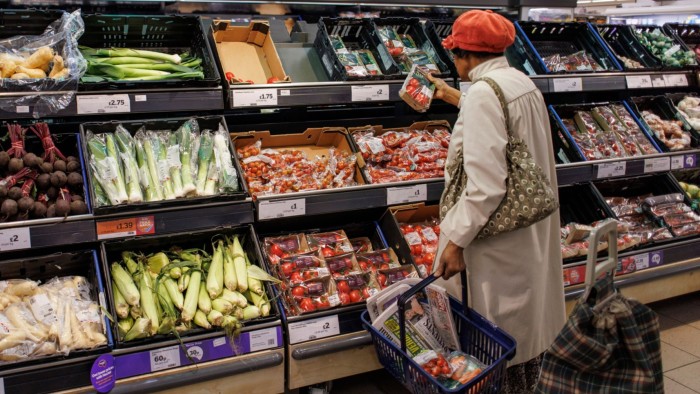Physical Address
304 North Cardinal St.
Dorchester Center, MA 02124
Physical Address
304 North Cardinal St.
Dorchester Center, MA 02124

Unlock Editor’s Digest for free
Roula Khalaf, editor of the FT, picks her favorite stories in this weekly newsletter.
Response rates to a survey based on estimates of UK GDP and inflation rates have fallen in line with the fall in the jobs survey, prompting the Office for National Statistics to take urgent action to ensure the quality of its statistics.
The statistics agency said it fielded more interviewers earlier this year to boost responses to surveys on living costs and food, in an effort to pre-empt data problems caused by the collapse of its Labor Force Survey (LFS).
Problems with LFS It has left policymakers unable to gauge the true state of the job market – and the ONS says this key input to interest rate decisions may not be fixed. Until 2027.
The Cost of Living and Food Survey, which collects information on household expenditure patterns and cost of living, is an essential input to the economic system.
The ONS uses it, along with other data sources, to compile estimates of GDP and to weight the basket of goods and services under its consumer price index, particularly the retail price index. The latest GDP figures will be released on Monday morning.
The survey is the most comprehensive source of information for researchers and policymakers seeking to understand how the cost of living crisis has affected households at different income levels and the impact of changes in taxes and benefits on living standards.
But, like the LFS, response rates to the cost of living and diet survey have declined over time, falling from 60 percent at the turn of the millennium to 40 percent in 2019.
It fell sharply as Covid lockdowns disrupted face-to-face interviews and hit a new record low of 22 percent in the 2023 financial year.
The number of “cooperating” household responses in 2022-23 was just 4,061, a sharp drop from the sample of more than 5,000 based on results over the previous five years.
Adam Corlett, chief economist at the Resolution Foundation think-tank, said the results, based on 2022-2023 data released in August, showed “unbelievable” declines in real-term spending compared to national accounts data for the same period. .
Meanwhile, researchers are still waiting for microdata that would normally have been made available by the ONS in September, but has been delayed until next year due to staff shortages.
“The whole world changed in February 2022 — and we still don’t have the data to see how that affected households,” said Peter Level, senior research economist at the Institute for Fiscal Studies, adding that new electronic data sources are no substitute. The overwhelming view provided by the survey.
The ONS said it began expanding the sample for the survey in April, increasing from around 900 interviewed in the first quarter of 2024 to around 1,240 in the third quarter. It also cross-checks the results against a range of other data.
“Where the cost of living and food survey feeds into headline household expenditure estimates, its results are triangulated with other sources, such as business surveys and trade data, to build a robust picture of household spending patterns,” the agency said, adding that by 2025 Start testing results against card-spending data early.
Level said the way the ONS used the LCF and other sources to produce the National Accounts was “opaque” and gaps in data disclosure were “increasingly a problem” as policymakers used the figures to assess the impact of tax changes on households.
The LCF directly determines the annual weighting of the RPI. It no longer has official statistical status, but is used to calculate some index-linked bond repayments and student loan repayments, and to set annual increases in train fares and phone bills.
Survey response rates have always been lower than others conducted by the ONS, as it is unusually burdensome. Respondents, including both adults and children, are asked to fill out a two-week diary itemizing their expenses.
The Office for Statistics Regulation, which controls the quality of UK statistics, raised “significant” concerns about the quality of the LCF in 2022 and called on the ONS to “invest time and resources” into fixing it.
It said in its assessment that a sample of 5,000 was too small to draw “useful and robust conclusions” for some users. The volatility of the data posed a “risk of reputational damage” to the ONS as it could mean genuine errors were not identified, the regulator added, “a major impact on price indices that use LCF data for their weights”.
The ONS took action to address the most pressing issues at the time, and the regulator said it provided sufficient assurance of data quality. However, the ONS’s progress in “digitizing” the diary process has been slow – a new tool to automatically scan receipts will only be introduced from the end of next year.
Funding constraints have delayed a long-term plan to integrate the LCF with other surveys and create a single, streamlined source of income, expenditure and wealth data.